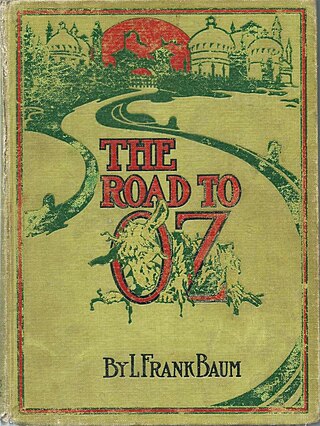
The Road to Oz is the fifth of L. Frank Baum's Land of Oz books. It was originally published on July 10, 1909 and documents the adventures of Dorothy Gale's fourth visit to the Land of Oz.

Ozma of Oz: A Record of Her Adventures with Dorothy Gale of Kansas, Billina the Yellow Hen, the Scarecrow, the Tin Woodman, the Cowardly Lion and the Hungry Tiger; Besides Other Good People Too Numerous to Mention Faithfully Recorded Herein, published on July 30, 1907, was the official third book of L. Frank Baum's Oz series. It was the first in which Baum was clearly intending a series of Oz books.

Tik-Tok of Oz is the eighth Land of Oz book written by L. Frank Baum, published on June 19, 1914. The book has little to do with Tik-Tok and is primarily the quest of the Shaggy Man to rescue his brother, and his resulting conflict with the Nome King.

The Magic of Oz is the thirteenth book in the Oz series written by L. Frank Baum. Published on June 7, 1919, one month after the author's death, The Magic of Oz relates the unsuccessful attempt of the Munchkin boy Kiki Aru and former Nome King Ruggedo to conquer Oz.

Princess Ozma is a fictional character from the Land of Oz, created by American author L. Frank Baum. She appears for the first time in the second Oz book, The Marvelous Land of Oz (1904), and in every Oz book thereafter.

The Land of Oz is a magical country introduced in the 1900 children's novel The Wonderful Wizard of Oz written by L. Frank Baum and illustrated by W. W. Denslow.
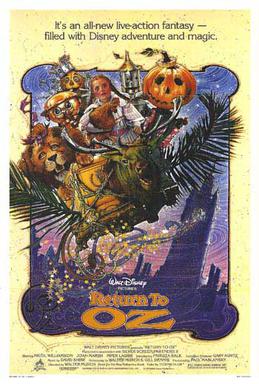
Return to Oz is a 1985 dark fantasy film released by Walt Disney Pictures, co-written and directed by Walter Murch. It stars Nicol Williamson, Jean Marsh, Piper Laurie, and Fairuza Balk as Dorothy Gale in her first screen role. The film is an unofficial sequel to the 1939 Metro-Goldwyn-Mayer film The Wizard of Oz, and it is based on L. Frank Baum's early 20th century Oz novels, mainly Ozma of Oz (1907). In the plot, an insomniac Dorothy returns to the Land of Oz to find it has been conquered by the wicked Nome King and his accomplice Princess Mombi. Dorothy must restore Oz with her new friends Billina, Tik-Tok, Jack Pumpkinhead, and the Gump.

The Deadly Desert is the magical desert in Nonestica that completely surrounds the fictional Land of Oz, which cuts it off from the rest of the world.
Oz Squad is a comic book series using characters and setting from L. Frank Baum's Land of Oz series, "updated for a more adult audience". It was created and written by Steve Ahlquist. The premise is that Dorothy, the Scarecrow, the Tin Woodman and the Cowardly Lion are now part of "Gale Force", a Mission: Impossible type organization working to protect Oz from all manner of bizarre threats.

The Nome King is a fictional character created by American author L. Frank Baum. He is introduced in Baum's third Oz book Ozma of Oz (1907). He also appears in many of the continuing sequel Oz novels also written by Baum. Although the character of the Wicked Witch of the West is the most notable and famous Oz villain, it is actually the Nome King who is the most frequent antagonist throughout the entire book series.
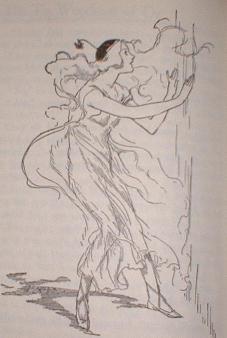
Polychrome is a cloud fairy and the youngest daughter of the Rainbow, thus she is a "sky princess". She first appears in The Road to Oz (1909), which is the fifth book of the original fourteen Oz books by American author by L. Frank Baum. She also appears several times in later Oz stories of the classic series, and has a title role in the modern sequel Polychrome: A Romantic Fantasy by Ryk E. Spoor.
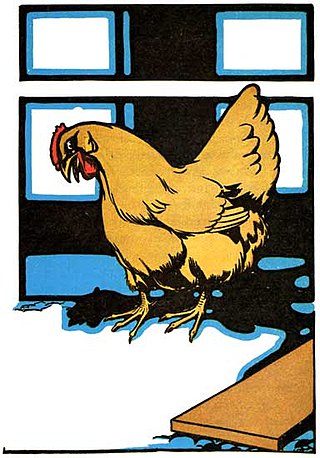
Billina is a fictional character in the classic children's series of Oz books by American author L. Frank Baum. She is introduced in Ozma of Oz (1907).
The Shaggy Man is a character in the Oz books by L. Frank Baum. He first appeared in the book The Road to Oz in 1909.
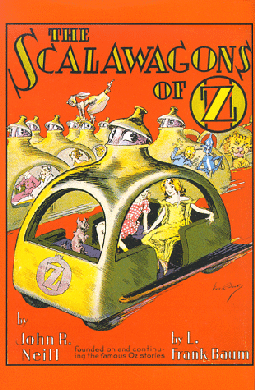
The Scalawagons of Oz (1941) is the thirty-fifth in the series of Oz books created by L. Frank Baum and continued by his successors; it is the second volume in the series both written and illustrated by John R. Neill.
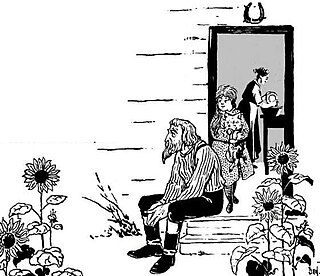
Uncle Henry is a fictional character from The Oz Books by L. Frank Baum. He is the uncle of Dorothy Gale and husband of Aunt Em, and lived with them on a farm in Kansas.

The Wonderful Wizard of Oz, known in Japan as Ozu no Mahōtsukai, is a Japanese anime television series adaptation based on four of the original early 20th century Oz books by L. Frank Baum. In Japan, the series aired on TV Tokyo from 1986 to 1987. It consists of 52 episodes, which explain other parts of the Oz stories, including the events that happened after Dorothy returned home.
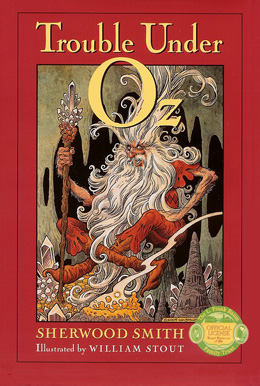
Trouble Under Oz is a 2006 novel by Sherwood Smith, illustrated by William Stout and published by HarperCollins. It is a sequel to Smith's 2005 novel The Emerald Wand of Oz which is a further continuation of the Oz series originally started by L. Frank Baum in 1900.

The Tik-Tok Man of Oz is a musical play with book and lyrics by L. Frank Baum and music by Louis F. Gottschalk that opened at the Majestic Theatre in Los Angeles, California on March 31, 1913. It is loosely inspired by Baum's book Ozma of Oz (1907), incorporates much of the material from Baum's book The Road to Oz (1909), and was the basis for his 1914 novel, Tik-Tok of Oz. It was promoted as "A Companion Play to The Wizard of Oz" and directed by Frank M. Stammers. The play is known from its advertising and published music, but survives only in earlier manuscript.

















